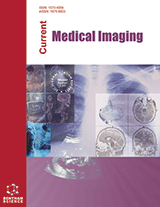
Abstract
Background: Generalized distal radius die-punch fractures (GDP) can involve three columns. However, there is no three-column classification for GDP. The aim of this study was to introduce a three-column classification for GDP, and to investigate the application effect of the classification.
Methods: 613 patients with GDP accrued from January 2013 to December 2021 were classified by column and fracture type based on imaging findings. First, the GDP was categorized into single-, double-, or three-column fractures. Second, the intermediate column fractures were divided into volar, dorsal, split, collapse, or mixed types; the radial column fractures were divided into metaphyseal, articular or mixed types; and the ulnar column fractures were divided into apical or basal types of the styloid process. The intra- and inter-observer consistency between the two assessors was analyzed with kappa statistics. 227 patients with less fracture displacement were treated conservatively, whereas 386 patients with increased fracture displacement were treated surgically, and the selection of surgical approaches and fracture reduction-fixation methods was guided by the classification. The differences in incidence, gender, age, treatment methods, and functional recovery were compared among the three categories, and the characteristics of different types were observed. The wrist joint function was evaluated according to the Sarmiento-modified Gartland- Werley method.
Results: The intra- and the inter-observer kappa coefficients were obtained as ≥ 0.810. There were significant differences in the incidence (12.7%, 68.5%, and 18.8%, respectively) and age (39.8, 46.6, and 47.1 years, respectively) for single-, double- and three-column fractures (P<0.05). However, there was no significant difference in terms of gender among the three (P>0.05). The mixed, collapse, split, dorsal, and volar types accounted for 28.7%, 27.7%, 21.9%, 15.5%, and 4.5%, respectively. The metaphyseal, articular surface, and mixed types accounted for 35.9%, 33.1%, and 31.0%, respectively. The apical and base types were 81.7% and 18.3%, respectively. Among the cases of volar and dorsal types, the missed diagnosis rate of X-ray alone was 28.5%, but it was confirmed by subsequent CT. In the last follow-up of 12.2 months (range, 6 to 24 months), the excellent plus good rate was 82.7% and 82.6%, respectively, in total and among patients undergoing surgical treatment; the excellent plus good rate of the single column fractures was 96.2%, significantly higher than that of double- and three-column fractures (80.0% and 83.5%, respectively) (P<0.05). All patients with fair or poor wrist function had collapse or mixed-type intermediate column fractures.
Conclusion: Different categories/types of GDP have significant differences in terms of incidence, age, efficacy, and prognosis. Imaging classification by column and type of GDP better reflects the features and injury mechanism of the fractures with good consistency. Therefore, it has important reference value for the surgical modality and prognosis evaluation.
Keywords: Distal radius fracture, Die-punch fracture, Three-column theory, Classification, Imaging, Consistency.
 15
15











